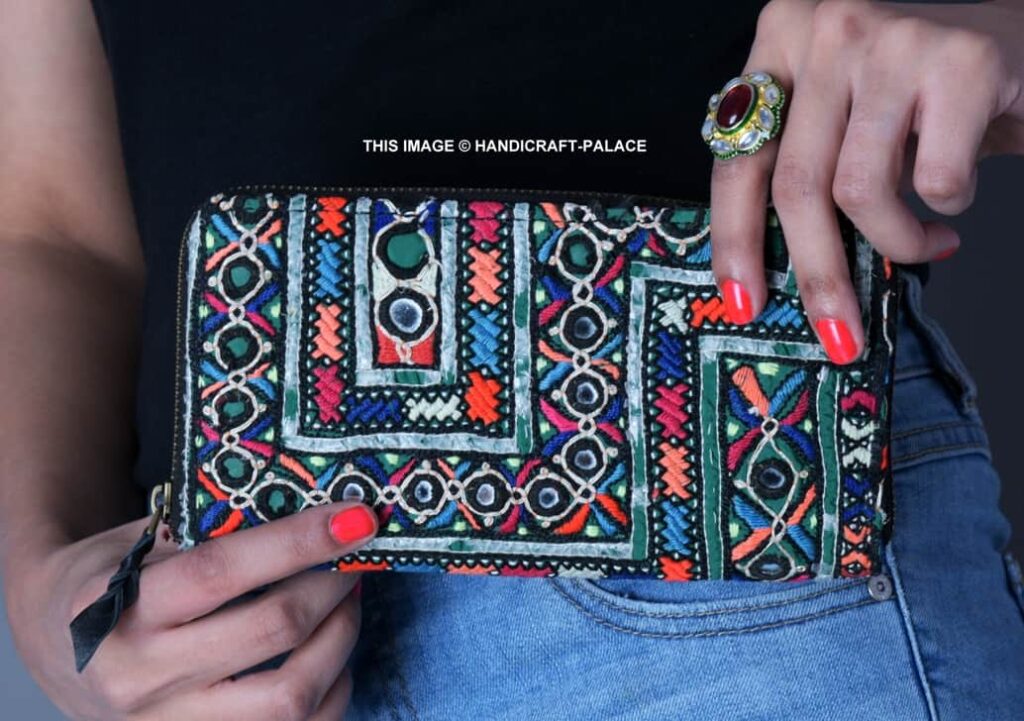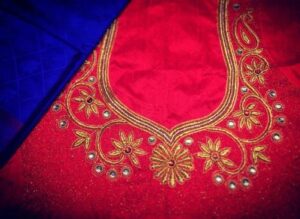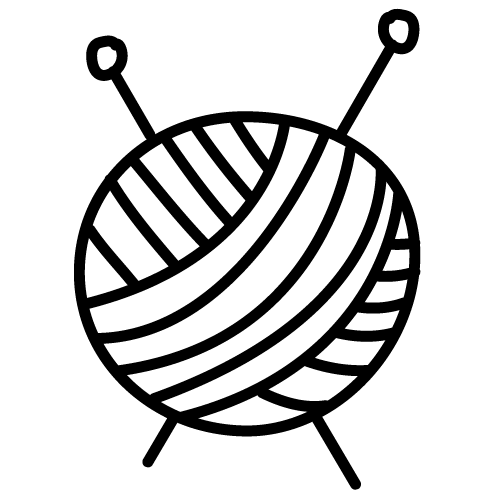Everything you need to know about
Bajara Embroidery.
What is Banjara Embroidery?
Banjara Embroidery is also known as Banjara Lambanis.
It is a mix of vivid threads, structural patterns, mirror work, sewing designs appliqué or interwoven.
Different colours are used for embroidery, for example, dark blue or red.
The base texture used is hand-lingered however, now they additionally use instantly accessible texture.
The fabric is cotton khadi.
The tools and raw material
Raw materials are brought from Gujarat, Kerala and Hyderabad.
- Poplin texture for sewing the item.
- Vardhaman thread for sewing the embroidery.
- Glass, assortments of stones and shell are used to stitch with the embroidery making it look alluring.
- Needles are used to embed the thread in it and stitch.
- Scissors and measuring tape are used to quantify and cut the material.
- A sponge is used for the firmness of fabric for weaving sewing.
How is stitching done?
Women’s clothing are sewed with full bright geometrical examples.
The glass embroidery work is folded over the midriff like a belt.
For dhoti worn by men, a shirt and a pagri or a turban are made.
The shirt will have more embellishments in contrast to a plain white dhoti.
Women accomplish the sewing work, while the showcasing position is dealt with by men.
The use of red, green, yellow, high contrast hues is unmistakable among them.
The Poplin texture is cut into the necessary estimation and size with the assistance of an estimating tape.
Lines are drawn on the cloth with scale, and chalk and then the thread is sewed providing a shape.
This principle texture is put on the sponge and sewed.
A sponge is used to keep up the solidness.
These three things are sewed together to gain the necessary item.
After the item is sewed, weaving work is done on it.
The sponge even causes the embroidery work to fasten the structure solidly, which stands out and makes it look alluring.
Vardhaman thread is used for embroidery.
Gujarat, Karoor, Kerala and Hyderabad are the four places from where the embroidery material comes.
The material is embroidered with assortments of globules, glass and shells in excellent examples and structure.
Glass and shell weaving are well known all around the globe.
Suvari Bai deals with the shop-Rani Bhai Banjara Garments.
Thirty individuals practice this art under her guidance.
Handicrafts are completed in a duration of 4- 5 months, while the small work are completed in a duration of 10- 15 days.
The themes, which are drawn from nature and math, are differentiated imaginatively.
At present assorted things are weaved available to be purchased.
Item diversification is upheld by the deliberate association and government offices like Lepakshi.
Who are Banjaras?
Banjaras are nomadic individuals relocating from Rajasthan and North Gujarat and scattered in different parts of India before the Mughal reign.
They used to go from spots to put in trucks with all the things they claimed.
In the seventeenth century, Banjaras traded products toward the South.
This was the first time when they moved toward the South where the streets and railroads made transportation of products simpler for them.
Later, some families settled in Karnataka and Andhra Pradesh, for example, Maharashtra.
What is Bijapur?
Bijapur, a region of Karnataka, is a city of notable landmarks.
This city has the most populace of Lambanis in Karnataka.
The vast majority of the families are into horticulture, and others are in the process of childbirth work in the urban communities of town.
With time, Lambanis have attempted to alter society.
They do not claim their farms, so they take a shot at different homesteads and acquire their wages.
Youth feel awkward to work in the hefty conventional dress; consequently, they have adjusted to casual dress, which is bringing about a separation from their customs and culture.
How are Banjaras known today?
Present-day Banjaras are known for their fine art.
Lambani women show their embroidery aptitudes on various kinds of article and present them in various reasonable or presentations or attempt to sell them through non-governmental organizations or NGOs.
The vast majority of the designers or NGOs recruit Lambani women for business and spread their speciality.
Lambani embroidery comprises the complicated thread work making geometrical examples with innumerable sewing aptitudes.
How can embroidery be defined?
The embroidery is remarkable in its style, and the supreme quality is accomplished with a mix of brilliance and innovation.
The perplexing weaving done through this artistic expression is set apart by numerous geometrical blends like precious stones, squares, and triangles.
The beautiful threads used in the embroidery are generally representative of the lively way of life of Banjaras.
For adorning an article, they additionally use globules, shells, and mirrors.
The daylight, which is reflected through the beautiful mirror emphasizes the stunning magnificence of this work.
Mirrors are used generally in Banjara Embroidery denoting a particular component.
A cornucopia of designs, just as figures, are made with the basic fastens, for example, herringbone, chain stitch, just as a short and long line.
Why is Banjara Embroidery famous?
Banjara Embroidery is famous for its elite energy regarding the hues and the use of different articles like coins, woollen decorations, cowrie shells, globules, mirror, cotton and others as embellishments.
The materials that are embroidered by Banjaras looks staggering.
The embroidery is done generally on blue or earthy coloured shaded fabric which are stitched.
The cotton or woollen thread is used for making intricate embroidery.
This guarantees the shading contrast to look noticeable.
A portion of the quilting stitch is used to design wherein the cotton threads are used for making numerous surprising geometrical examples.
What are the products obtained from Banjara embroidery?
Banjara embroidery is noted for its energetic improvement cowrie shells, coins, cotton and woollen decorations weighted with lead, glass globules, and mirror works are wholly used to embellish their materials.
Banjara artisans make delightful knitted handkerchiefs, packs and totes, typically on earthy coloured or here and there blue fabric.
Did we miss something?
Let us know in the comments down below!














